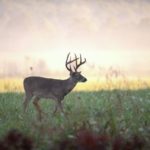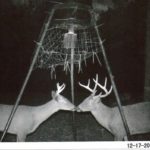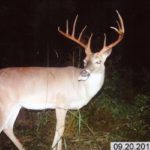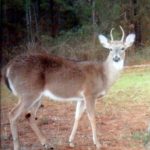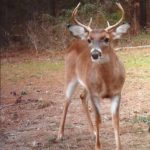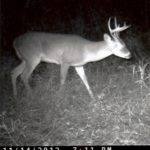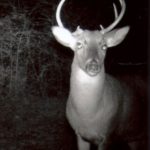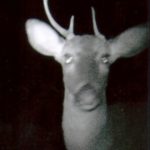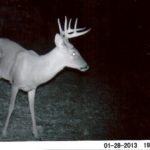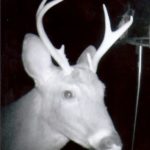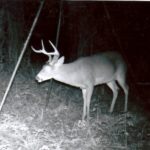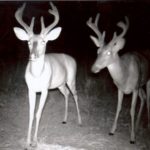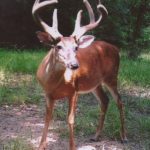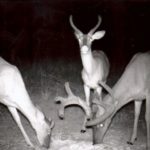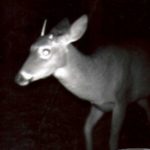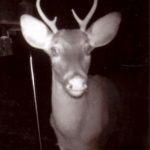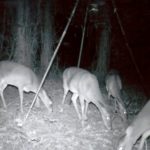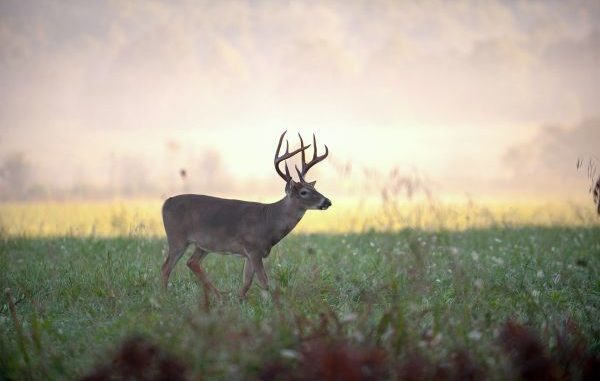
The deer season has arrived, and if you are like most people you have lots of pre-season photos of bucks. Now comes trigger time, but do you shoot or let it walk?
A new age of deer management and hunting was ushered in when the concept of quality deer management began to sweep across the Southeast United States and eventually into the Bayou State.
It grabbed the attention of many hunters because hunters in the ’90s really began looking at their management and deer-harvest programs to see what could be done to grow larger bucks.
The idea of QDM basically evolved around the idea of simply passing up young, small bucks and letting them grow older. However, QDM also spurred the idea of improving habitat through deer plantings, and this has turned into a major industry.
Along with planting came the idea of year-round feeding, areas that are not hunted, herbicide forest treatments to improve browse conditions (and grow pine trees faster), and lots of trail cameras activity to aid in determining population estimates and track of deer growth and development.
I dare say most clubs and landowners are involved in some form of QDM.
Along with QDM came the Quality Deer Management Association that works hard to promote QDM and assist clubs and landowners with their deer program. If you are not a member you should visit their Web site and check out their magazine, which is probably the best deer management publication available today.
Years ago, when I was Louisiana’s deer study leader and the QDM movement began in the state, the Department of Wildlife and Fisheries experimented with an antler restriction program in Iberville, West Baton Rouge and Pointe Coupee parishes.
The program ran for three years but it did not produce the results that many hunters thought it would.
Other states had been involved with antler restriction programs, and some were seeing some positive results. Many in Southeast Louisiana are familiar with the Mississippi program and how it evolved. Biologists there learned that point-based restricts do not serve as the foundation of the best AR program to use with deer management.
Likewise, the 6-point experimental program in Louisiana basically didn’t do much because of the variation in the deer habitat and the deer densities in these parishes. AR programs work best on tracts with good habitat conditions for deer and with herds that are in balance with the habitat.
Of course, that has always been the key to good deer management: Keep the habitat productive (primarily the forest), and keep the deer numbers in balance with the habitat (generally below carrying capacity).
Following the 6-point experiment in these three parishes, the department initiated an antler restriction program on the Thistlethwaite Wildlife Management Area for 10 years — and the bottom line is that the program has been dropped for this season because it too did not accomplish much.
If you read Deer and Deer Hunting magazine, you are probably aware that Michigan is experimenting with an antler program in 12 counties for this season, and it is drawing heat from many deer hunters, including Ted Nugent. The program uses antler points — three points on one side — for a buck to be legal.
Most of the complainants say this should be a voluntary program; let the hunters decide for themselves what to shoot.
Kentucky has a one-antlered buck limit program with no antler restrictions, and hunters decide what they want to shoot. That program is working and producing results because many hunters hold out and do not shoot the small bucks.
I am not sure that program would work in a state like Louisiana. Our three-buck limit seems to satisfy most hunters, and while younger bucks are being killed we have increased our harvest of older aged bucks.
My deer management philosophy is similar to QDM, but I believe in harvesting the low-end bucks from each age class.
In our state, especially in the piney woods, there is much variation in the antler growth and development of bucks. Not many of the young 1 ½- and 2 ½-year-old bucks have the potential to reach what would be considered quality status, say a 125-inch-class buck.
In fact, perhaps only 20 percent of a given age class have this potential.
All habitats are different, and that is why a club or landowner needs to learn the potential for raising quality deer on their habitat before initiating a quality or trophy harvest program. Once this potential is determined, harvest and habitat management can be directed toward reaching this potential — along with having some enjoyable days of deer hunting.
On some lands in the state, the buck harvest is way too low, and no doubt clubs and landowners are having bucks die from stress, disease, etc., when some of them should be harvested.
If you need help with your program contact LDWF; they have a private lands program with a staff of biologists being paid to do just that, help you with your deer management.
Test time
OK, now it is time for this year’s test. Look at the photos of these bucks and decide what you would do: shoot or don’t shoot.
Following the photos are comments as to what I would do, and keep in mind that I do not mind shooting low end-bucks.
Some of the photos are from last season, some are of deer that are available for harvest this season and a few are bucks that were harvested last year.
After a few decades of hunting it is becoming more and more clear to me that when you see a deer and think it is one you should shoot, you better do it. The idea that I will shoot it another day seldom works for me, as you will see when you read this.
Our hunting success in Louisiana hinges so much on weather conditions, and in our Gulf Coast environment, the winter weather can be quite mild and deer movement will often be zero.
So when you make the decision to go hunting and deer actually show up, the stars have either lined up for you in the heavens or you are just plain lucky.
No. 1 – The first question on a test should always be an easy one, and this should be a no-brainer. Two bucks are checking each other out — a 2 ½-year-old 6-point and a 4 ½-plus-year-old 8-point.
Also remember the legal daily limit is only one antlered buck!
From the Expert:
This really is a no brainer: Obviously the target buck is the big 8-point, which is probably 5 or 6 years old. It is not going to score very high, but it is a great mature deer, really nice G2s. This would be a good buck to try to kill with your bow.
The photo really shows the difference between a young buck and a mature buck; main beam lengths are really obvious, and if you are trying to kill a trophy buck main beams are very important.
The bottom line is that if you are growing older bucks like this one, why would you shoot them at the younger age classes? Definitely let them go, and they will grow. The habitat work is achieving results on this property.
No. 2 – OK, so this is an easy one, also. I’m trying to build your confidence for the really hard ones.
From the Expert:
This buck has trophy written all over it. It is from the same area as the first photo, so there is no doubt that the growth and development potential on this tract of land is good.
Choot him, Jacob! Choot him!
No. 3 – A typical 1 ½-year-old spike in the Northwest piney woods. You are not going to get much to look at for a wall mount, but you will get meat for the freezer. What to do?
From the Expert:
A typical Louisiana 1 ½-year-old spike. While it is more desirable to have yearlings produce branched antlers, the fact is that most of the habitat in Louisiana produces spikes.
So if you want older deer, do not shoot. Let him grow older. This is really decent antler growth for this age class and this is not an old cowhorn spike, so this would not be a reason to shoot the buck.
No. 4 – Well, they are getting a little bigger from the antler perspective, but do you want to use a tag on this buck?
From the Expert:
Another nice young buck — small body, small antler mass and small inside spread, maybe 12 to 13 inches.
Again, if the goal is to produce larger and older bucks, this would be one to pass, especially if this buck is only 2 ½ years old.
If you know how many points the bucks in the 2 ½-year-old age class are averaging, you can see where this deer fits in on the scale, and that would help in the decision making process.
The 13-inch inside spread on this deer is good for that age class.
No. 5 – OK, this is a fairly good look at both the body and antlers, How old do you think this East Feliciana buck is? Do you shoot?
From the Expert:
A good view for field judging and aging bucks because you see both the body and the antlers. These are decent antlers, but the straight top line on the back and straight line on the belly seem to indicate a 2- to 3-year-old buck.
Knowing this buck is living in dominant pine habitat, I would say it is a 3-year-old, and if I saw this buck on my small property — and this buck is on our small property — I would shoot it. We do not get many chances at adult bucks.
On a larger tract, you would probably pass on it.
No. 6 – Good grief: What happened to this buck? Would you shoot this 4×2?
From the Expert:
Another adult buck from our small property, this 2 ½-year-old — not doing too much with the antler growth — was photographed on Nov. 24 and Nov. 25. It was never seen again until one day in late January, and my son-in-law shot it.
Deer with this type of antler growth tend to repeat it again the next year, so this was not a bad one to harvest.
No. 7 – Oh, no, another freak of nature. Do I really want to put a tag on this one?
From the Expert:
Another freaky buck, another 2 ½-year-old buck. I saw this buck on three occasions during the season and decided to pass on it each time, but sent someone in to shoot it.
They never saw the buck, and finally toward the end of the season with one buck tag left I decided if I saw it I would shoot it — but I never saw it again.
It showed up at the end of the season at a feeder where I was trying to bait hogs. We will be on the lookout for it this year.
No. 8 – Now this is a better buck, but is it that good? It looks a little skinny.
From the Expert:
This is a really nice buck with good G2s and G3s, pretty good main beams, but the deer sure is skinny.
The date on the photo says Jan. 28, so the buck survived the 2012-13 deer season and hopefully recovered from the stress of the rut and will be around this fall.
This buck has good potential to get better and would be a good one to pass on, even though it is a 3- to 4-year-old.
Of course, there is some degree of risk when passing up deer with the idea that they will be around for the next year, but it is a risk that is probably worth taking with this deer because of its potential.
No. 9 – Umm, this is what the hunters in Michigan have to decide when they see a buck like this. It has three points on each side.
From the Expert:
To me, this deer is just plain ugly and needs to be shot. It is an adult (I think it’s probably 3 ½ years old) and exhibits very poor antler growth.
Shoot this low-end buck or try to get someone else to shoot it, and use the food that it would be eating for deer that have more potential.
As stated earlier, most clubs and landowners do not shoot enough bucks, so pull the trigger on this one. Again, the key is to know that this is a low-end deer, which means keeping good records, including jawbones for aging, of all harvested deer every year.
No. 10 – Oh, man, another 3×3, and this one has a good body. You have one buck tag left; are you going to use it?
From the Expert:
Another big 6-point, and the view of the body tells me this is a mature 4- to 5-year-old that is living in the piney woods of DeSoto Parish.
Shoot it and use the antlers for rattling horns!
No. 11 – Looks like I am seeing double. The antlers sure look big on those skinny deer.
From the Expert:
This photo was taken in early August in East Feliciana Parish. The buck on the left is probably 4 ½ years old based on antler mass and brow tines, and I would consider it as a shooter even though it would not score very high.
The running mate of this buck might also be a 4-year-old, but it’s not showing much tine development. Maybe pass on this one and let it go another year.
No. 12 – I think you might get this one right!
From the Expert:
This is a really nice East Feliciana 8-point and one that is a shooter with bow or gun. I am going to be looking for it with my crossbow.
No. 13 – The elusive antelope buck (deer in the middle). I had pictures of one like this in 2011 and never saw the deer during the entire season; surely this is not the same deer? We all know what to do with the deer on the right.
From the Expert:
The adult buck in the middle — the antelope buck — is definitely a low-end deer that should be shot.
In 2011, I was gunning for one that was very similar to it but never saw it during the season — which is why I say, if you see a deer that you think you should shoot, your chance for it on another day might not happen.
No. 14 – I don’t know what is going on with this deer. A pencil spike on one side and a peg spike on the other. This deer needs help.
From the Expert:
This is a low-end 1 ½-year-old piney woods buck; these bucks are a dime a dozen in the where I hunt because most of the hunters around us think these low-end spikes will become B&C bucks in a few years, so they do not shoot them.
The animals’ body weights are usually less than 100 pounds, and in these piney woods they do not catch up unless they can convert summer pasture grass to protein (which they cannot).
The yaupon and climbing fern that is abundant in the woods does not seem to help them catch up, either.
So shoot it and put some meat in the freezer.
BUT, this is what I would do on this pine dominant habitat. On another site there might be resources that allow a deer such as this to catch up, so keep your harvest records and know what your growth and development is.
No. 15 – Hey, it is a 2×2. Whatcha gonna do, jack?
From the Expert:
This is a 2 ½-year-old 4-point — an adult buck with only four points. It is not a yearling buck.
This is why antler restrictions are not the best way to manage deer. In Michigan in the QDM area, this buck would have to be passed up, would eat up the habitat for another year and would probably be shot as a 3 ½-year-old 6-point the next year.
No. 16 – This must be a trick question: These deer ain’t got no horns!
From the Expert:
Four adult does and no fawns; what is going on? Need to figure it out, but in the meantime pick out one and shoot it and get meat for the freezer or some sausage for tailgating.
